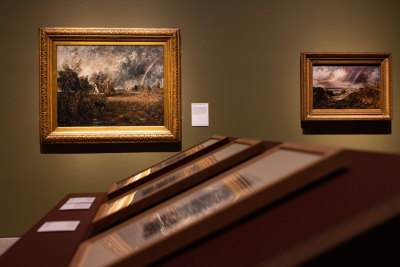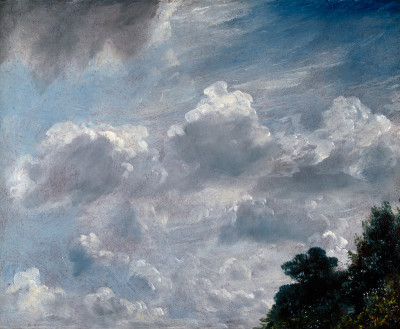With William Kent at Burlington House
With William Kent at Burlington House
By John Harris
Published 24 March 2014
As the V&A celebrates the highly influential artist and designer, we reveal how William Kent’s career came to life with his work for Burlington House – now the home of the Royal Academy.
-
Were William Kent (1685-1748) to come off Piccadilly and enter the Royal Academy of Arts quadrangle today he would still recognise Burlington House, with, in his own words, its ‘true Palladian front’, built by Colen Campbell in 1718-19. In 1717 Richard Boyle, 3rd Earl of Burlington, had designed his own Bagnio in the gardens at Chiswick House in a Palladian style. This was described by Campbell as ‘the first essay of his Lordship’s happy invention’, although Burlington was indebted to Campbell in borrowing architectural details from Burlington House. As an amateur architect Burlington would have taken Campbell into his architectural confidences. Burlington’s own architecture was fully matured when he designed a villa at Tottenham Park, Wiltshire, for his brother-in-law Lord Bruce in 1721. Later Kent would design the Great Room there.
In 1710 the young Kent, aged 25 and a budding painter, had travelled with John Talman to Rome, settling in Italy for nine years, when he struck up warm friendships with many milordi, among them Thomas Coke, later 1st Earl of Leicester, who possessed a passion for sculpture, painting, rare books and architecture. The young Coke, who was seventeen, met Kent in 1714 and travelled with him in Italy for five years. It is likely that Coke was one of the first to recognise Kent as a potential Jack of all trades, possessing of a vast store of artistic knowledge and truly a Renaissance Man, a quality belied by his charming inarticulate writing. All who met him loved him.
-

William Kent, The Glorification of Inigo Jones, 1719-20.
(Transferred from H.M.Works, 1867).
Oil on canvas. 182.90 cm diameter. © Royal Academy of Arts, London. Photo: John Hammond.
-
Kent left Rome in the autumn of 1719 to wait in Genoa, where he may briefly have met Burlington. Certainly Kent was waiting for him in Paris, both arriving back in London in November now intent on overcoming, in Kent’s words, ‘that Dam’d Gusto thats been for this sixty years past’, meaning the architecture of Wren. Kent settled into Burlington House as Burlington’s companion there, and at Chiswick, for life.
In Italy Kent had been strongly influenced by the classical tradition emanating from Raphael via Reni and Carracci, and later Maratti and Luti, and from Giuseppi Chiari, whose pupil he became. Upon his return, on 10 December 1719, he wrote to Burrell Massingberd, ‘am lodged in his [Burlington’s] house, and he will have me begin to paint for him the fierst thing I do wc’h is the fine roome in his new building. I have already made the designs which he seems to be much pleas’d with’.
-

William Kent, The Wedding Feast of Cupid and Psyche.
-
This scheme of decoration comprise the surviving three painted schemes. Firstly the circular Glorification of Inigo Jones, which includes a putto pointing to Campbell’s paper design for the Burlington House front and a partial view of the temple of Fortuna Virilis, the source of Chiswick’s portico (the painting’s intended location at that time is unknown and it is now in the middle of the ceiling above the Academy’s central staircase).
Secondly, by January 1720, Kent had ‘made a sketch in collers for the great roome in the front, and all the rest of the ornaments yt are, to be al Italiano, I waite only to get my things & then hope shall set to work’. What he painted in the cove of this room that faces the courtyard – now known as the Saloon – was painted over in 1771-5 and is currently undergoing restoration. It was seemingly accompanied by his characteristic grey and ochre grisaille ornament of the sort to be found in the cove decoration of the King’s Drawing Room, Kensington Palace, of 1722-3, that also incorporates Kent’s favoured mosaic work. Indeed he would become the master of this type of ornament, notably for the ceiling of the Belisarius Room at Raynham Hall, Norfolk, c. 1724, and for the Great Staircase and the spectacular Red Saloon at Houghton Hall from 1725. Kent also painted a canvas for the Saloon’s ceiling – a Banquet of the Gods, or maybe The Wedding Banquet of Cupid and Psyche, that is a surprisingly baroque composition, not unlike the Entrance Hall ceiling at Ditchley Park, Oxfordshire, 1725. The third commission Kent completed was for the ceiling in what is the Slaughter Room: a loose composition, maybe an Assembly of the Gods.
-

William Kent, Assembly of the Gods, 1719-20.
(Transferred from H.M.Works, 1867).
Oil on plaster. 442.0 x 350.50 cm. © Royal Academy of Arts, London.
-
Kent’s work at Burlington House cannot be disassociated with what he did at Chiswick, where Burlington was the architect, but Kent the designer and decorator of the interiors. The domed Octagon was a shared work, decoratively incomplete as can be seen in engravings. By 1727 the Gallery ceiling with its grotesque ornaments was begun, as was the Red Velvet Room with its cameo decoration with portraits of Pope and Prior, and the bracketed Blue Velvet Room, Burlington’s private studiolo inspired by what he had seen of Giulio Romano’s work In Italy.
In our explorations of Burlington House little has been noticed about furnishings. Kent’s great achievement was consideration of the whole, for he saw the decoration and furnishing of a room as an entity, and Burlington House was no exception. Before leaving us on our tour, Kent would have expressed surprise, and maybe pleasure, at the Ballroom, now the Reynolds Room, with its remarkable example of Kentian Revival furniture designed in 1814 by Samuel Ware.
William Kent’s paintings at Burlington House can be viewed during tours of Royal Academy’s John Madejski Fine Rooms Tuesday at 1pm, Wednesday – Friday at 1pm and 3pm and Saturday at 11.30 am.
‘William Kent: Designing Georgian Britain’ is at the Victoria and Albert Museum, London until July 13 2014, accompanied by an exhibition catalogue edited by Susan Kent.






